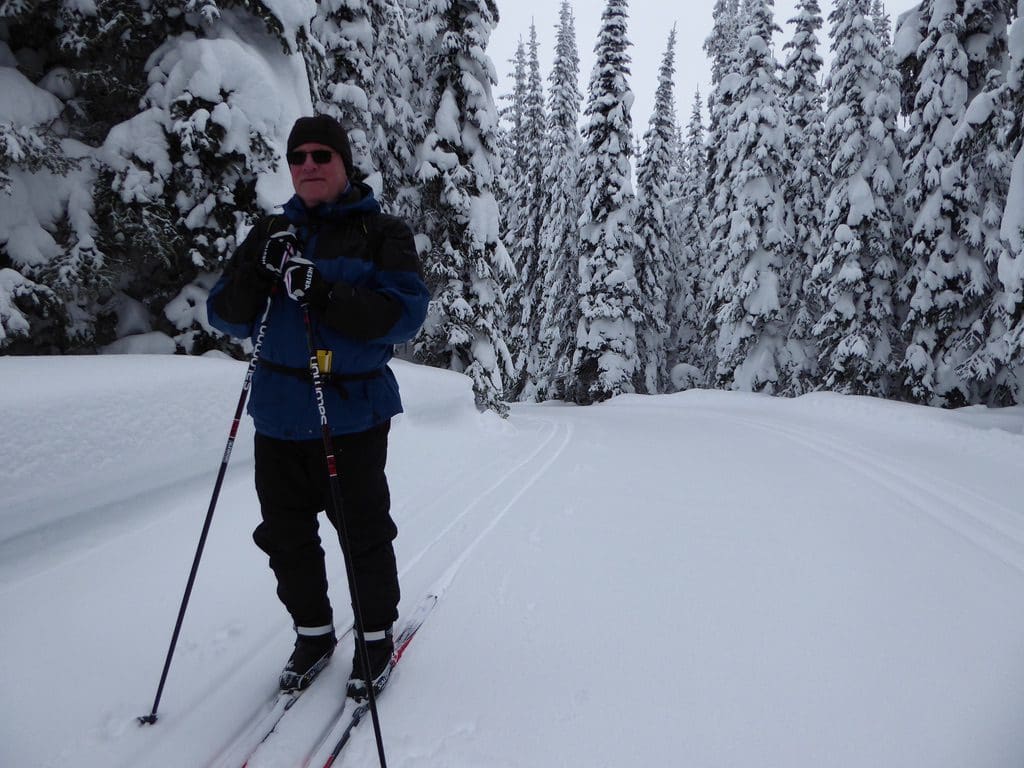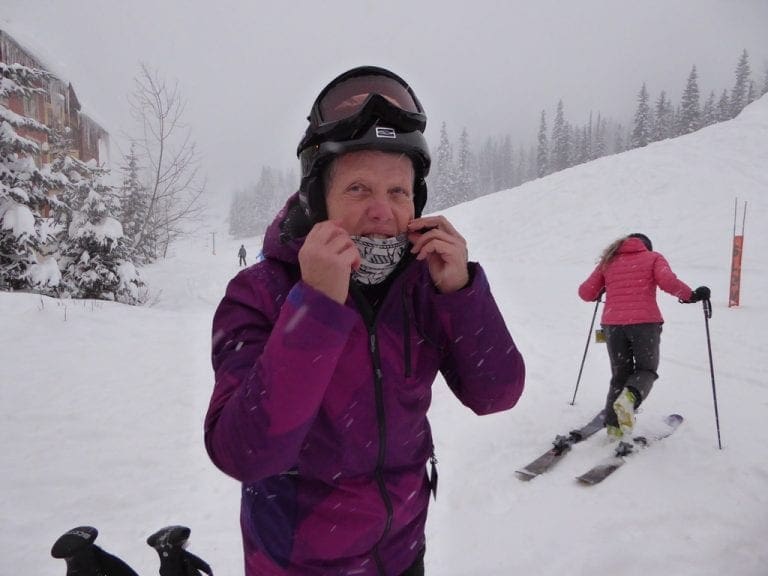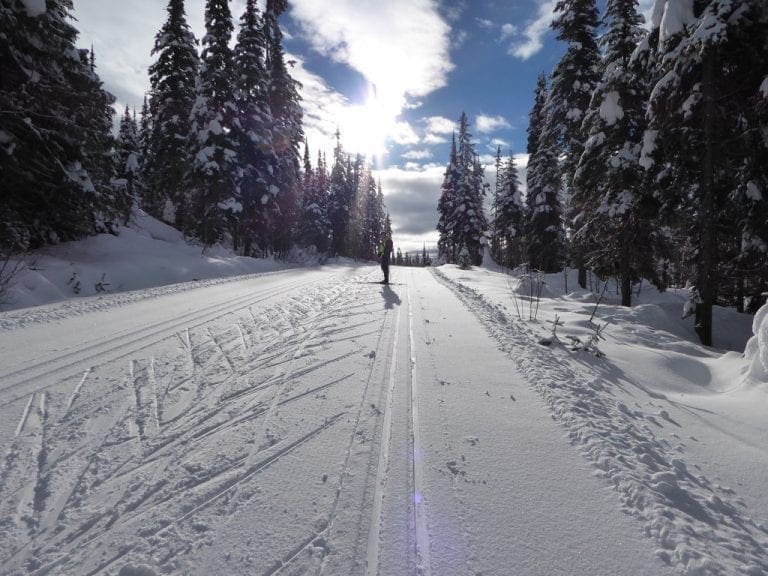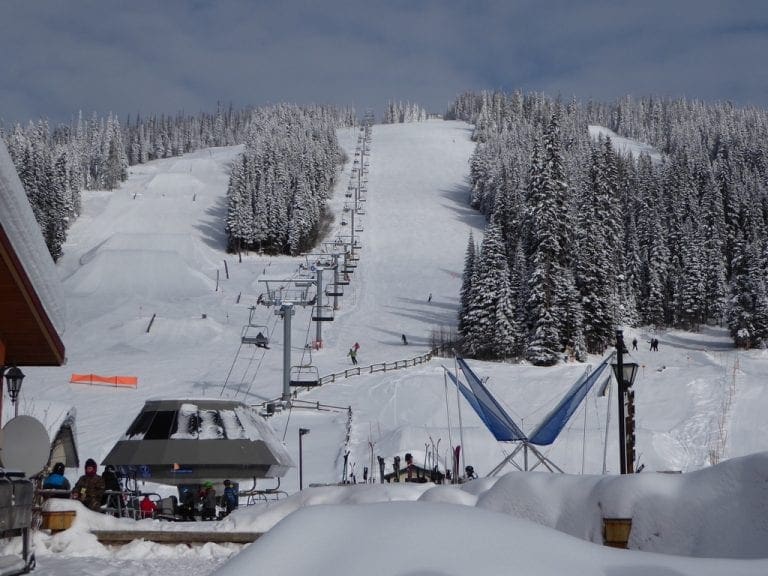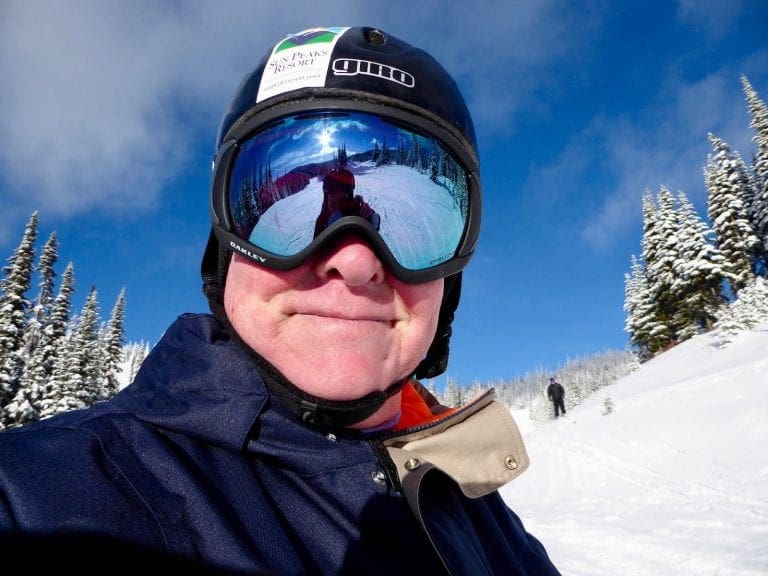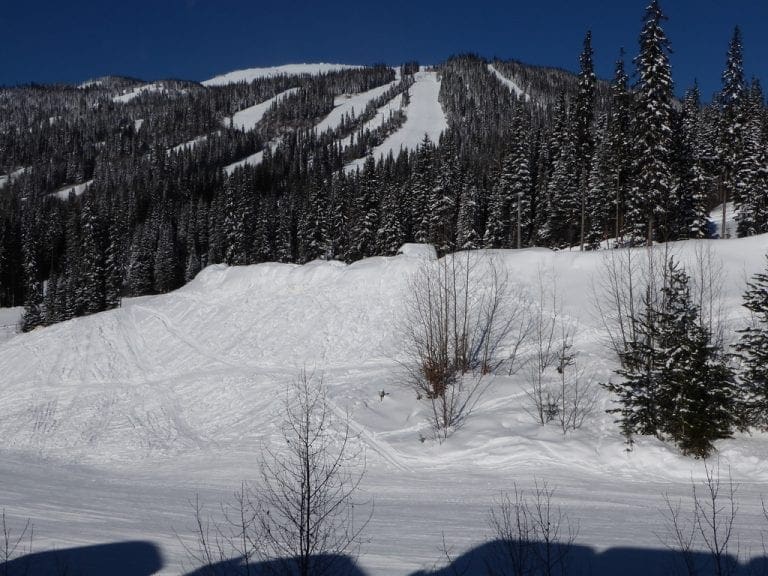Sun Peaks trip 2018 – Week 6/7
 |
| Powder in trees Sun Peaks |
Saturday 24 Feb 2018. Another day off for me. Helen has gone out for a morning of Resort Telemark. Absolutely glorious conditions, sunshine, new snow and flurries. I was intending to go out, but realistically, I need more time to recover from my stuff up skate skiing two days ago. We have one week to go. We leave a week today.
 |
| More powder in trees |
Monday 26 Feb 2018. Sunny and not too cold -10ºC. Back to Resort Telemark again. This went much better for me today and I felt I was getting my ski legs back. Just 6 runs because I am still in recovery from that disaster last Thursday. Twice down Homesteader (Helen did twice down Sundowner), and 4 times down Cahilty/5 Mile. Mostly skiing top to bottom without stopping. I came in and Helen had more runs. 1:47 hours, 32.84 km (including lifts), 3270m descent, max speed 54.6 kph, 725 kcals. Helen got very cold – freezing hands and feet.
TV. The Cahilty Hotel has installed a Telus cable system this year, which means that we get a huge number of channels – all much the same, very uninteresting and flooded with US content. The US content is ONLY about the US – even their so called ‘world news’ is about the US. Not even a small peek at another country. Even Canadian news is flooded with US news. You get the idea. After much searching we did eventually find a very few programs that were not US talking about US. Grump finished.
I’ve been thinking about an exercise program for the type of skiing that we do.
Resort Telemark:
- Glutes
- Legs/quads/knees/hams (bumps, lunges, squats, abduct, adduct)
- Step down & step up
- Coordination
- Stamina (long cardio at low revs – at least 1 hour and working up to 3 hours)
- Strong feet & calves
- Lower Abs for double pole
- Balance
- Jump from foot to foot with hip forward and out
- Tricepts
Tuesday 27 Feb 2018. Sunny with occasional snow shower. -10ºC. Quite a good day. I tackled my first dark blue run – Cruiser – and, although I did it, it was not pretty. I do not like chopped up snow. Helen is doing much better. So, today was Granny Greenes, Homesteader, Cruiser, twice Cahilty/5 Mile, (Helen did twice Exhibition), Homesteader (Helen did Sundance). The zip on my jacket had come undone and I was cold and we came in. We need more stamina. 2 hours, 32.64 km, 900 kcal, 3165 m descent, max speed 52.7 kph.
Wednesday 28 Feb 2018. It snowed all day. We had a day off. We plan to classic country for the last few days. We hired Salamon gear from Elevation late today.
Thursday 1 Mar 2018. 17 cm of snow overnight. Beautiful. We classic skied from Stables along Cotton Tail, up Black Bear and McGillivray to Moose, then back down McGillivray to Cotton Tail and back to Stables. McGillivray was newly groomed but all the rest had about 5cm on top of the grooming. Progress was slow and required energy. Even coming down McGillivray needed a lot of work. No easy ride down. Beautiful with snow in the trees. 2:45 hours, 7.18 km, 115m ascent, 1493kcals, recovery almost 4 days. Fairly exhausted this afternoon.
Friday 2 Mar 2018. Our last day skiing here this year. At least 8 cm of new snow overnight. We followed our plan and classic skied down Holy Cow. Caught the 8 am Shuttle to Morrisey base and we were on the 3rd chair. The top of Holy Cow was magnificent – absolutely perfect with its 8cm of new snow on the grooming – slow and easy to stay in the tracks on the downhill parts. All went well until we reached about the 3km marker. From there on we had very sticky snow that stuck to the skis.
We could get no glide and it became a very long way down. I had a fall into the snow bank when my right ski went from gliding to suddenly stopped. We skied Holy Cow, Great Grey, Cotton Tail. We were planning to catch the shuttle back, but missed it by 10 mins because of the slow, difficult trip out. Saved by a long stop at the Umbrella at Morrisey base. Came back via the walking trail. 3:10 hours, 10.54 km, 1706 kcals, 415m descent, max speed 29.1 kph, recovery time = 5 days. The Salamon gear was disappointing.
We have thoroughly enjoyed our time here – again. We are planning to come back next year for at least six weeks.
I’ve built a slideshow from the photos from the 7 weeks. This link should launch it. There are quite a few photos so it can take a few minutes to get running properly. I’ve used wowslider which was very much easier than the clunky mobirise version I used before.
Saturday 3 Mar 2018. A day of packing, shuttle buses, sitting, aircraft, more sitting and more aircraft. Uneventful.
